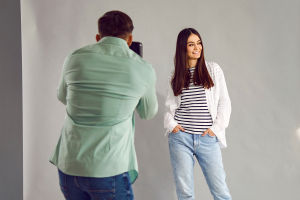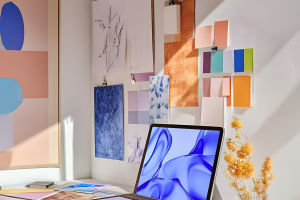A friend recently showed me a digital painting of a forest—light filtering through leaves, perfect brush textures, even subtle emotion in the shadows. I asked who made it. "Oh," she said, "just AI. Took 12 seconds."
I didn't know what to say. I'm someone who's spent hours shading a single tree. I've stained my fingers with charcoal, cried over messed-up canvases, and kept sketchbooks like diaries. But now… AI does it better, faster, and for free?
So, the question hits hard: If AI can make beautiful art, do we still need human artists?
AI art is smart—but not self-aware
Let's be real: AI-generated art is getting scary good. It can mimic any style, blend references from a billion images, and even take vague prompts like "a cat surfing in the style of Van Gogh" and make something impressive.
But there's a catch. AI doesn't know why it creates. It doesn't feel anything.
It's not wondering if it should use blue because it feels lonely or draw a figure in the corner because it misses someone. It just patterns and predicts.
That's fine—if you want cool visuals. But art is more than that. It's storytelling. It's memory. It's flawed, emotional, and often confusing. That's what makes it human.
What people actually want from art
When someone buys a painting or follows an illustrator online, they're not just drawn to technique. They're drawn to the artist. The backstory. The struggle. The person behind the image.
Here's what AI can't replicate:
1. Lived experience: A drawing of grief from someone who lost someone hits different. No amount of algorithmic style can fake that emotional weight.
2. Process and imperfection: Artists grow. They change. Their style shifts with who they are. That journey—the rough drafts, the breakthroughs—is part of the magic.
3. Connection: People want to feel seen. That comes from knowing another human felt something, made something, and chose to share it.
You don't cry over an AI image because it reminds you of a letter your sister wrote. But you might cry over a sketch your friend made—even if it's technically "worse."
But what about money and careers?
This is the hard part. AI isn't just a tool—it's competition. Clients who used to pay freelancers now ask AI to design logos, book covers, even storyboards. Budgets shrink. Creative jobs disappear.
So, where does that leave artists who want to make a living?
It leaves them needing to shift focus—from output to identity. If AI makes art faster, you make it more human. You offer what AI can't:
• Your personal take
• Your lived story
• Your consistent voice
• Your community and values
It also means learning new boundaries. If you use AI, how you use it matters. Are you feeding it your own sketches and editing the results? That's still your vision. But if you just type a prompt and post the result—it's not really your work. And audiences can tell.
How to stay human in an AI art world
This isn't about resisting change. It's about choosing how you show up in it. Here's how to stay grounded:
1. Lean into your voice: Don't try to be a style machine. Be specific. The more personal your work is, the harder it is to copy.
2. Share your process: Show the behind-the-scenes. Sketches. Notes. Mistakes. These are things AI doesn't have—and people love to see.
3. Build your audience, not just your portfolio: Your art is part of a bigger conversation. Connect with people who care about your message, not just your style.
4. Use AI as a tool, not a shortcut: It's fine to explore. Just make sure the final work still has you in it.
You're not replaceable—your copy is
If your goal is to mimic trends or chase perfection, AI will win. Every time. But if your goal is to express something only you know, feel, or care about—AI doesn't stand a chance.
We don't listen to music only because it's catchy. We listen because someone wrote it through heartbreak. We don't read books just for grammar. We read them to feel less alone. Same with art. So yes, AI can make beautiful images. But it will never know what it means to be you. And sometimes, that's all the reason you need to keep creating.


